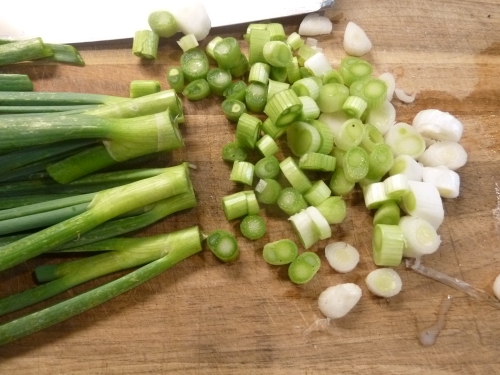I become very aware of how comfortable I am in my own little world when I travel. Everything changes. I have always liked to travel, but I notice with our lifestyle changes and the foods we are eating over the past few years, there is so much more to it now.

Spring just seemed to come really early, and I know many of you can relate to the hustle and bustle of getting your gardens ready and spending a lot of time outside. I am preaching to the choir there. When my mom called to say she was going to have a partial knee replacement in 2 weeks, all my plans changed and I needed to leave. My head started to spin with all the things I needed to do at home before I left. I was going to be with her, there was no question about that and for the most part I can roll with these sudden changes. This time it just took a bit more preparation and planning to get the garden planted.
 Only when I physically arrived in Southwest Florida did I start to think about local food. My mom wanted to take me a place called Food & Thought, but it would have to wait until she was well enough to be able to leave the condo after the surgery. This trip wasn’t about me and my eating habits, it was all about my mom and her needs. This wasn’t a vacation for me, I wasn’t going to be walking on the beach or laying by the pool reading a book or even hopping in the car to scope out local food stores.
Only when I physically arrived in Southwest Florida did I start to think about local food. My mom wanted to take me a place called Food & Thought, but it would have to wait until she was well enough to be able to leave the condo after the surgery. This trip wasn’t about me and my eating habits, it was all about my mom and her needs. This wasn’t a vacation for me, I wasn’t going to be walking on the beach or laying by the pool reading a book or even hopping in the car to scope out local food stores.
While mom was in surgery (having this pretty cool robotic procedure that actually only takes a little over an hour and is done as an outpatient) we were going be doing a lot of sitting. My step-dad and I ran out to Temple Citrus to pick up fruits and veggies. Well, we forgot to bring the cooler (too hot that day to leave veggies in the car) with us when we all loaded up to go to the hospital so we would be limited to picking up oranges and grapefruit and after that the shopping wasn’t up to me.
Temple Citrus brings back many childhood memories of visiting Gramps in Hollywood, FL and picking fresh oranges and grapefruit to squeeze for juice. Gramps planted special trees for my brother and I. We each had our own orange and our own grapefruit trees. There were also avocado and kumquat, and if we had a little too much sun, there was aloe that we would snip. When my parents decided to buy a place on the west coast of Florida we would stop at places like Temple Citrus to get our citrus fill. They have their own citrus orchards and farms for some of the veggies and there are always samples that you can taste to help you decided which oranges or grapefruits you wanted to buy.
 Both of my parents spend a lot of time volunteering at the Naples Botanical Garden and the week I arrived each of the volunteers was given a huge onion straight from the vegetable gardens there. The vegetables grown there are donated to a local food shelf. My mom has met wonderful friends through volunteering there and she had several starfruit from a friend’s tree along with another huge papaya. That is a good start to eating local.
Both of my parents spend a lot of time volunteering at the Naples Botanical Garden and the week I arrived each of the volunteers was given a huge onion straight from the vegetable gardens there. The vegetables grown there are donated to a local food shelf. My mom has met wonderful friends through volunteering there and she had several starfruit from a friend’s tree along with another huge papaya. That is a good start to eating local.
My parents mostly eat real wholesome food. There are some back up cans of soup and baked beans in the pantry, but for the most part they eat foods I can enjoy. Lots of salad and vegetables. My step-dad makes the bread. One of the neighbors makes different jams. Many of their friends have been delivering food and treats and flowers to wish my mom a speedy recovery. We have enjoyed homemade oatmeal scones with homemade star fruit and mango jam. We have enjoyed homemade raspberry coffee cakes – the raspberries are from my step-dad’s garden up in Minnesota. Homemade chicken and barley soup. Homemade vegetable soup. We did not go hungry. A beautiful Easter Lily kept us company on the lanai and another bouquet of stargazer lilies and blue irises kept us company on the dining room table. Another friend gave my mom a beautiful tea cup with gladiolas on it and a fresh orchid bloom from one of her plants
 My mom is doing really well, I even let her go on a walk done the sidewalk on her own today without me on Tuesday! She has been calling me Mother Superior; I am not sure it is entirely a compliment. It is hard to keep an active 80 year old tied down long. She wants to get back to tennis and swimming in the surf.
My mom is doing really well, I even let her go on a walk done the sidewalk on her own today without me on Tuesday! She has been calling me Mother Superior; I am not sure it is entirely a compliment. It is hard to keep an active 80 year old tied down long. She wants to get back to tennis and swimming in the surf.
Sincerely, Emily
P.S. We left the house for the first time yesterday and went to the Naples Botanical Garden. We also stopped at Food & Thought and I ran inside and bought a few things. What a great store. All organic. If they don’t grow it themselves, they try to get it as local as they can. If they can’t get it local it is all organic and US grown or produced.
You can see what else I am up to over at Sincerely, Emily. The topics are varied, as I jump around from gardening to sewing to making bread or lotion and many things in between.
Read Full Post »


















